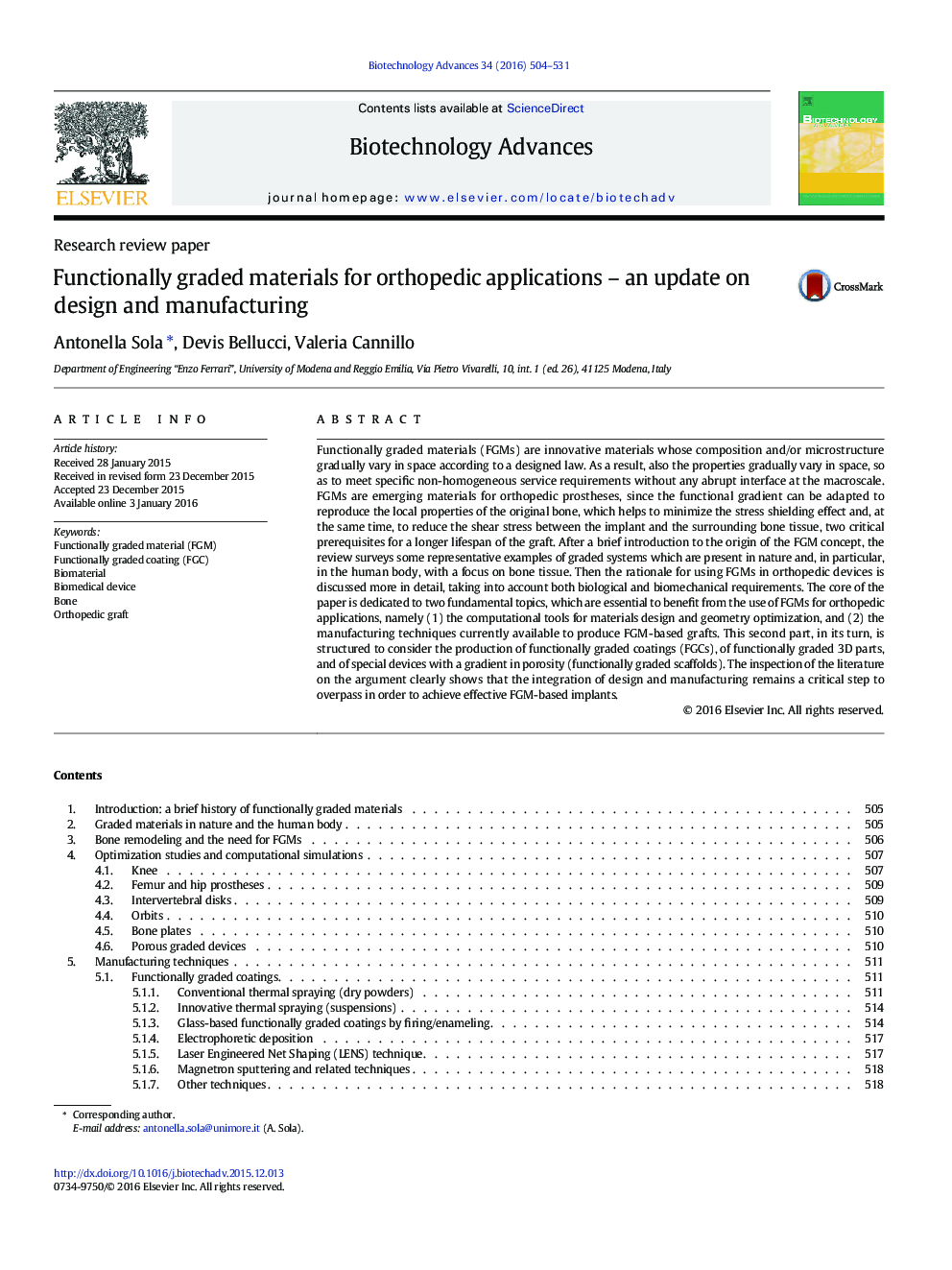| کد مقاله | کد نشریه | سال انتشار | مقاله انگلیسی | نسخه تمام متن |
|---|---|---|---|---|
| 6451204 | 1361336 | 2016 | 28 صفحه PDF | دانلود رایگان |
- The composition of Functionally Graded Materials (FGMs) changes gradually in space.
- The local properties of FGMs can be tailored to meet specific requirements.
- Bone is an example of natural FGM.
- FGMs are ideal materials for bone grafts.
- Appropriate design and fabrication methods are required for FGMs for bone grafts.
Functionally graded materials (FGMs) are innovative materials whose composition and/or microstructure gradually vary in space according to a designed law. As a result, also the properties gradually vary in space, so as to meet specific non-homogeneous service requirements without any abrupt interface at the macroscale. FGMs are emerging materials for orthopedic prostheses, since the functional gradient can be adapted to reproduce the local properties of the original bone, which helps to minimize the stress shielding effect and, at the same time, to reduce the shear stress between the implant and the surrounding bone tissue, two critical prerequisites for a longer lifespan of the graft. After a brief introduction to the origin of the FGM concept, the review surveys some representative examples of graded systems which are present in nature and, in particular, in the human body, with a focus on bone tissue. Then the rationale for using FGMs in orthopedic devices is discussed more in detail, taking into account both biological and biomechanical requirements. The core of the paper is dedicated to two fundamental topics, which are essential to benefit from the use of FGMs for orthopedic applications, namely (1) the computational tools for materials design and geometry optimization, and (2) the manufacturing techniques currently available to produce FGM-based grafts. This second part, in its turn, is structured to consider the production of functionally graded coatings (FGCs), of functionally graded 3D parts, and of special devices with a gradient in porosity (functionally graded scaffolds). The inspection of the literature on the argument clearly shows that the integration of design and manufacturing remains a critical step to overpass in order to achieve effective FGM-based implants.
Journal: Biotechnology Advances - Volume 34, Issue 5, SeptemberâOctober 2016, Pages 504-531
